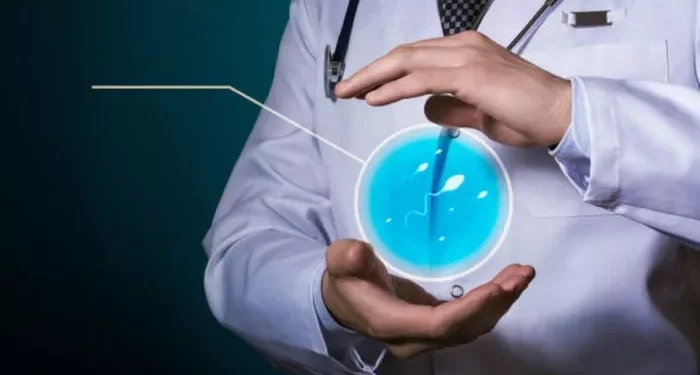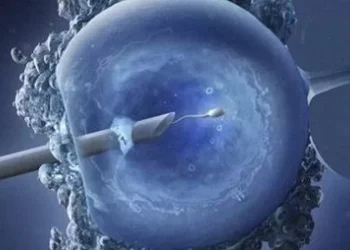Azoospermia is a condition characterized by the absence of sperm in the ejaculate, which can significantly impact male fertility. It is a crucial factor to consider in the evaluation of male infertility and is often a cause of great concern for affected individuals. Azoospermia can be either obstructive, where there is a physical blockage preventing the passage of sperm, or non-obstructive, where there is an issue with sperm production itself.
Understanding the prevalence of azoospermia is important for both patients and healthcare providers. It affects approximately 1% of the general male population and is found in about 10-15% of men seeking treatment for infertility. These figures highlight the significance of azoospermia as a common and impactful condition in the realm of reproductive health.
Types of Azoospermia
Obstructive Azoospermia
Obstructive azoospermia (OA) occurs when there is a blockage in the male reproductive tract that prevents sperm from being present in the ejaculate. This blockage can occur at various points, such as the epididymis, vas deferens, or ejaculatory ducts. The obstruction can be congenital (present at birth) or acquired due to infections, surgeries, or trauma.
The primary mechanism behind OA is that sperm are produced in the testicles but cannot be transported out due to the blockage. As a result, semen analysis will show a complete absence of sperm despite normal or increased levels of spermatogenesis in the testes.
Common causes of obstructive azoospermia include:
1. Congenital bilateral absence of the vas deferens (CBAVD), often associated with cystic fibrosis.
2. Infections leading to scarring and blockages, such as epididymitis or prostatitis.
3. Surgical procedures, including vasectomy or hernia repairs, which can inadvertently damage the reproductive tract.
See also: An Overview of Azoospermia: Causes, Diagnosis, and Treatments
Non-Obstructive Azoospermia
Non-obstructive azoospermia (NOA) is characterized by a failure in sperm production within the testes. This condition can arise from a variety of genetic, hormonal, or idiopathic (unknown) causes. Unlike OA, there is no physical blockage, but rather an impairment in the development or maturation of sperm cells.
The mechanism behind NOA involves disruptions at different stages of spermatogenesis, from the initial division of germ cells to the final maturation of spermatozoa. Factors contributing to NOA include:
1. Genetic abnormalities, such as Klinefelter syndrome (47,XXY) or Y-chromosome microdeletions.
2. Hormonal imbalances affecting the hypothalamic-pituitary-gonadal axis.
3. Environmental exposures to toxins or radiation.
4. Varicoceles, which can impair testicular function by disrupting blood flow and temperature regulation.
Diagnosis of Azoospermia
Diagnosing azoospermia involves a thorough evaluation by a medical professional, including a detailed medical history, physical examination, and laboratory tests. The primary diagnostic tool is a semen analysis, which confirms the absence of sperm in the ejaculate.
Semen Analysis
Semen analysis is the cornerstone of diagnosing azoospermia. It involves examining a semen sample under a microscope to determine sperm count and motility. A diagnosis of azoospermia is made when no sperm are detected in the ejaculate on at least two separate occasions.
Additional Diagnostic Tests
If azoospermia is confirmed, further tests are necessary to distinguish between obstructive and non-obstructive azoospermia. These may include:
1. Hormonal profiling: Measuring levels of follicle-stimulating hormone (FSH), luteinizing hormone (LH), and testosterone can help identify hormonal imbalances that may contribute to NOA.
2. Genetic testing: Identifying genetic abnormalities, such as karyotyping for Klinefelter syndrome or testing for Y-chromosome microdeletions, provides insight into underlying genetic causes.
3. Testicular biopsy: A surgical procedure to extract tissue from the testes for examination. It helps differentiate between OA and NOA by assessing the presence of spermatogenesis.
Treatment Options
The treatment of azoospermia depends on its underlying cause. Advances in medical and surgical techniques offer hope for many affected men.
Obstructive Azoospermia
For men with obstructive azoospermia, surgical interventions can often restore the passage of sperm:
1. Vasovasostomy or vasoepididymostomy: Microsurgical procedures to reconnect the vas deferens or bypass blockages, respectively.
2. Transurethral resection of the ejaculatory ducts (TURED): Surgery to remove obstructions within the ejaculatory ducts.
3. Percutaneous sperm aspiration (PESA) or testicular sperm extraction (TESE): Techniques to retrieve sperm directly from the epididymis or testes for use in assisted reproductive technologies (ART).
See also: Causes and Treatment Options of Hypospermatogenesis
Non-Obstructive Azoospermia
Treatment options for non-obstructive azoospermia are more complex and depend on the specific cause:
1. Hormonal therapy: For men with hormonal imbalances, medications to normalize hormone levels may stimulate sperm production.
2. Genetic counseling: For men with genetic causes of NOA, counseling provides information on reproductive options and potential risks.
3. Sperm retrieval techniques: Advanced techniques, such as microdissection TESE (micro-TESE), allow for the extraction of sperm directly from testicular tissue. These sperm can be used in intracytoplasmic sperm injection (ICSI) procedures as part of in vitro fertilization (IVF) treatments.
Conclusion
Azoospermia, characterized by the absence of sperm in the ejaculate, is a significant cause of male infertility. It affects about 1% of the general male population and is present in 10-15% of infertile men. Understanding the types of azoospermia—obstructive and non-obstructive—is crucial for appropriate diagnosis and treatment.
Obstructive azoospermia results from blockages in the reproductive tract, whereas non-obstructive azoospermia is due to impaired sperm production. Accurate diagnosis through semen analysis, hormonal profiling, genetic testing, and testicular biopsy is essential to differentiate between these types and guide treatment.
Treatment options vary depending on the type of azoospermia. Surgical interventions can often address obstructive causes, while hormonal therapies and advanced sperm retrieval techniques offer solutions for non-obstructive cases.
Ultimately, a diagnosis of azoospermia does not mean the end of fertility options. With the advances in medical science and assisted reproductive technologies, many men with azoospermia can achieve biological fatherhood. Seeking professional evaluation and personalized treatment plans is key to navigating this challenging condition and exploring available reproductive options.
Related Topics:
7 Causes of Azoospermia: Everything You Need To Know



























